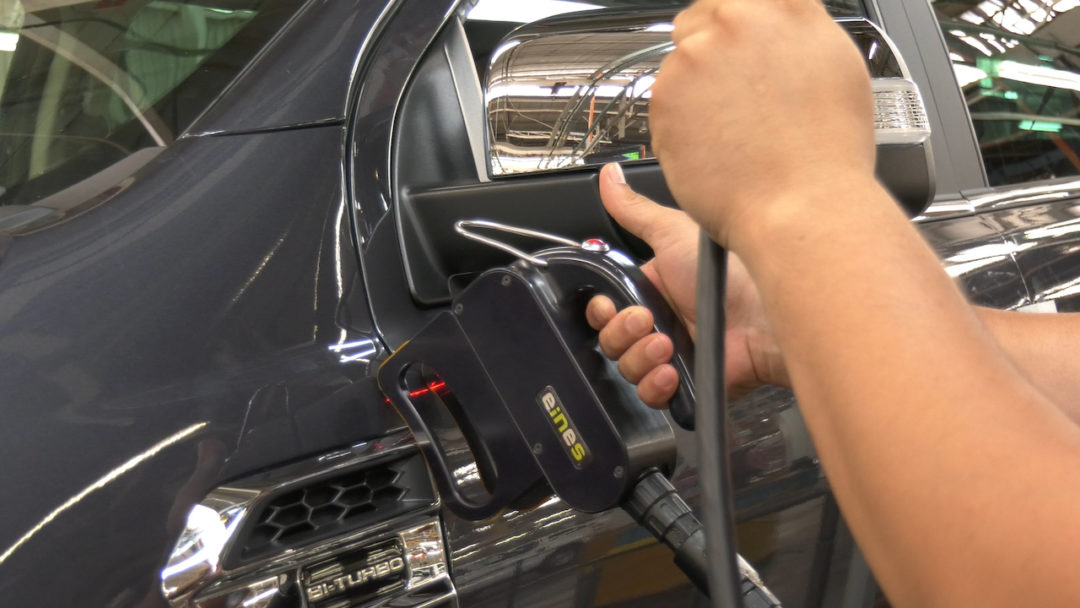
TThe complexity and technology involved in a modern vehicle assembly plant is simply breathtaking, with Ford Company of Southern Africa’s Silverton Assembly Plant in Pretoria capable of building over 26 000 different combinations of the Ranger pickup and Everest seven-seater SUV for domestic sales and export to over 100 markets globally.
Everything from the chassis design to the wiring harness, engine and gearbox combination, bodywork configuration, left or right-hand drive layout, wheels and tyres, interior trim level, as well as the standard and optional features selected by customers around the world have to be taken into consideration when planning and executing the build order for each vehicle that comes off the assembly line.
As complicated as this is, one aspect of the production that remains consistent throughout this process is Ford’s unwavering focus on quality. Along with the sophisticated Paint Defect Detection System used in the Silverton plant’s high-tech Paint Shop, Ford relies on an advanced Fits Gate system near the end of the assembly line, which digitally scans and measures the gaps and flushness between the various body panels on every vehicle produced – with over 10 000 vehicles assembled per month in normal operating conditions.
“Build quality is one of the most important considerations for customers when it comes to purchasing considerations as well as ownership satisfaction,” says Ockert Berry, VP Operations at Ford Motor Company of Southern Africa (FMCSA). “As part of our ongoing investment in the Silverton Assembly Plant, we launched the Fits Gate system in 2019 to ensure that we are able to consistently produce vehicles of the highest quality.
“By replacing the previous manual inspection of panel gaps and flushness between the bonnet, doors and tailgate with a computerised system, we have been able to significantly improve the fit of all the sheet metal components, despite the expansion in production capacity and the challenge of increased volumes,” Berry adds. “This resulted in a dramatic improvement in customer satisfaction for our locally produced vehicles, which ensures that we are on par with Ford’s most stringent global quality standards.”
The system is linked to handheld laser measurement gauges used by operators on either side of the vehicle who move from the front to the back measuring the margin and flushness between the bonnet, doors and tailgate at various predetermined points. They are guided by a monitor that displays all of the points to be checked for each specific model and body type.
All of the measurements taken are captured on Ford’s global quality management systems and verified against the minimum specification. If the vehicle is found to be out of specification in any area, it is realigned and the test is repeated. Only once the panel gaps and flushness are within the required range is it released for the final portion of the journey down the assembly line.
With real-time monitoring, the Fits Gate technology allows for early detection of any production issues so that these can be quickly identified and rectified in the Body Shop or on the Trim, Chassis and Final (TCF) assembly line, as required. The data is shared with Ford plants globally for comparative purposes, and the system provides full traceability throughout the birth history of the vehicle – from each measurement taken, right down to the specific laser measuring tool used and the individual operator.
“The benefit of the Fits Gate system is it ensures every vehicle that leaves our facility meets Ford’s strict craftsmanship requirements that we are governed by internationally for all our models,” explains Marko Venter, Vehicle Operations Manufacturing Engineering (VOME) Body and Paint Engineering manager at FMCSA. “In measuring every single vehicle, we are able to take that data back and make any changes required to ensure that we maintain this craftsmanship specification for all our customers.”
- Ford’s Silverton Assembly Plant uses an advanced Fits Gate system on
its assembly line in Pretoria to measure the gap and flushness between all
sheet metal components of the Ranger and Everest
- Handheld laser measurement gauges are used by operators on either side of the vehicle who move from the front to the back measuring the bonnet, doors and tailgate
- Every vehicle produced at the Silverton plant is measured and data captured to ensure highest quality for Ford’s customers locally and in more than 100 export markets
